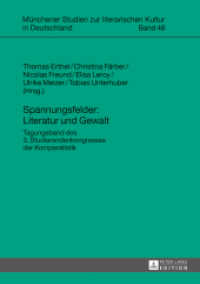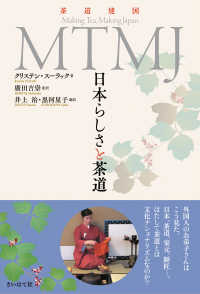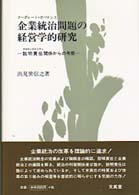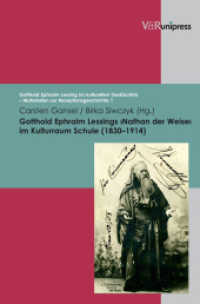- ホーム
- > 洋書
- > 英文書
- > Science / Mathematics
Full Description
Provides public health, sanitary and water engineers baseline data for designing plants for the treatment of industrial effluents rich in the metallic species in general and that of nickel and chromium in particular.
DescriptionWater pollution is a topic of immense and common concern throughout the world. With a rapidly escalating global population and increased industrial development in a growing number of countries, the world's freshwater resources have become stressed. One way to get more out of less is 'treatment and reuse'. Nickel and chromium are toxic metals and they are used extensively in numerous industries such as textiles, beverages, steel, pulp and paper, and electroplating. Their industrial effluent contains large measures of non-biodegradable traces that are harmful to flora, fauna, and human beings. Although there are a number of methodologies used for treatment of metal-containing industrial effluents and waste water, there is not one up to now that offers a high capacity removal rate at an economical cost.
This book presents the results and data from research and adsorption experiments carried out on the removal of nickel and chromium (as well as other metals) from aqueous solutions using modified silica sand. The data resulting from detailed kinetic, equilibrium and thermodynamic studies, show that the removal capacity is increased so the treated water has a higher quality or purity. It also demonstrates that the extraction of metals is achieved at a significant lower cost because the treated water adsorption is a simple process with less maintenance, and because silica is a nontoxic natural material widely available in all parts of the world.
Contents
Preface ix 1. Introduction 1
1.1 Environment 1
1.2 World Water Distribution 2
1.3 Environmental Pollution 5
1.4 Chromium 11
1.5 Nickel 16
1.6 Objectives 20
1.7 Literature Review 20
1.8 Adsorption 31
1.9 Adsorption Forces 35
1.10 Adsorption Theories 36
2. Material and Methods 39
2.1 Adsorbent Collection and Storage 39
2.2 Adsorbent Modification 39
2.3 Preparation of Adsorbate Cr (VI) and Ni (II) Solution 40
2.4 Instrumentation 40
2.5 Batch Adsorption Experiment 41
3. Results and Discussions 45
3.1 Characterization of Silica Sand 45
3.2 Effect of Contact Time and Initial Concentration of Cr (VI) and Ni (II) 52
3.3 Effect of pH on the Removal of Cr (VI) and Ni (II) 56
3.4 Effect of Temperature on the Removal of Cr (VI) and Ni (II) 60
3.5 Effect of Adsorbent Dosage on the Removal of Cr (VI) and Ni (II) 66
3.6 Adsorption Isotherm 73
3.7 Adsorption Kinetics 79
3.8 Thermodynamic Studies 86
4. Conclusions 91
References 94








